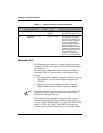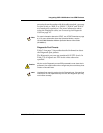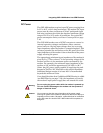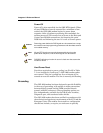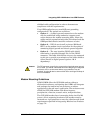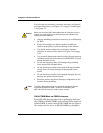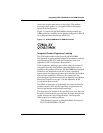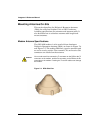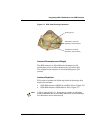
Integrator’s Reference Manual
7-18 80-99208-1 Rev. D
Power-Off
Power-off is also controlled via the OR’d DTR signals. When
all port DTRs have been de-asserted for a minimum of one
second, the GSP-1620 modem begins its power-down
sequence. After all software processing has concluded, the
modem powers off. This causes loss of power to the Data and
Control port RS-232 transmitters, de-asserting the ports’
DSR lines and informing the user it is safe to remove power.
Caution
Removing power before the DSR signals are de-asserted can corrupt
the modem’s service programming parameters and other data stored in
non-volatile memory.
Note
All port DTR signals must remain de-asserted during the entire
power-down sequence, until the DSR signals are de-asserted.
Note
DSR/DCD will also go inactive in case of a fatal error that causes the
modem to reboot.
Hard Power Reset
Provisions equivalent to power cycling (see Pin 25 in Table
7-1) are included to “hard reset” a GSP-1620 modem under
user control. This pin is pulled low for a minimum of five
seconds to reset the modem. The line is normally left floating.
Grounding
The GSP-1620 modem has been designed to provide flexibility
in the area of grounding, with options to make connections
between digital ground and the OEM-provided chassis
ground (metallic enclosures). These grounding options are
also independently available for the DB-25 user interface,
Diagnostic port, and associated cable shields.
The GSP-1620 modem has been certified in accordance with
the technical and regulatory requirements of the FCC and the
European Union. The modem was tested in a configuration
that did not include, or require, an enclosure or specially





